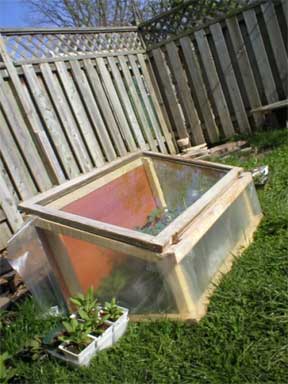April is the busiest month of spring up North. This is the time when trees, shrubs, evergreens, perennials and other hardy plants are set out. And the sooner this is done, the better. Any orders for plants, seeds, fertilizers and supplies should be taken care of at once, for the demand at this season is heavy and shortages are inevitable.
If summer-flowering shrubs are to bloom their best, they should be pruned hard early in the spring. This recommendation holds true, whether the. subject is a rose of Sharon, hardy hydrangea, clethra or chaste-tree. The more tender hypericums and the hardy seashore shrub, tamarix, should also be pruned. In all cases the best bloom is produced on the young shoots that develop after pruning.
Hills of snow hydrangea, on the other hand, should be cut to the base each year. Clethra, if allowed to grow tall, will produce its flowers only at the top. A hard annual pruning will give better and longer bloom. Vitex, because it develops such long stems in a season, should be reduced to within a foot of the base. This practice is especially desirable for the species, Vitex macrophylla.

While you are pruning the summer flowering shrubs, also cut some stems from the glossy abelia. This will encourage prolonged bloom. After pruning these shrubs severely, follow with an application of a complete fertilizer such as 10-8-6, using 4 pounds per 1000 square feet.
The summer or florist’s hydrangea does not produce a wealth of blooms if cut back drastically. If the tops are cut to the third bud, flowering will usually improve. However, in some cases it is the tip bud that flowers. So the wisest course is to experiment, pruning the plants in various ways. Only by doing this will you find the most successful method.
It is outdoor seeding time. Over most of the Northeast it is warm enough to sow most of the vegetables. However, in the most northern areas, coldframe protection is still necessary. If your garden space is limited, run the rows only 1 foot apart.
Coldframes for Starting Seedling
Before I owned coldframes I found it an excellent plan to have a seedling nursery in a sheltered spot. It was 12 feet by 6 feet, just the size of two coldframes. Here I sowed crops that would be transplanted later: Cabbage for mid-season heads, leeks, cauliflower, Brussels sprouts and broccoli. Later, when the weather grew warmer, zinnias and other annuals were sown, followed by later vegetables. This spot was in use until late summer.
Half-hardy annuals that can be sown now include: California-poppy, scabiosa, alyssum, calendula, gaillardia, cleome, basket-flower (Centaurea americana), candytuft, chrysanthemum, gypsophila and Phlox drummondi. In many sections it is also possible to get in a sowing of marigolds and cosmos.
Put a little extra effort into preparing the seed bed. Good seed germination depends first upon good seed, then moisture and warmth. The cool-weather crops germinate better at a fluctuating temperature than at a high one. The warm-season crops that are planted later such as lima beans and zinnias require warmth; otherwise seed will rot.
After uncovering the roses, examine the plants. Those that are weak, diseased, or badly injured as a result of last year’s drought or severe winter weather should be removed. Do not compromise. Poor plants will not respond, no matter what treatment you give them.
Daffodils and other spring bulbs will be coming along at an accelerated pace, and with them, the early-flowering shrubs. Take time out to study your spring bulb plantings for possible improvement. There are some gems among the newer daffodils that you should become acquainted with. Also, there may be some spots in your garden where the bright early-flowering shrubs, flowering-almond and the Manchu cherry (Primus tomentosa) could be included. Combined with forsythia and spring bulbs, these make a charming picture to brighten the home landscape.
Lifting, dividing and replanting perennials is in order now, too, If you raised new plants from seed last year and they are still in the seed beds, waste no time in getting them into permanent quarters. Improve the soil by working in some compost or humus and a well balanced fertilizer.
